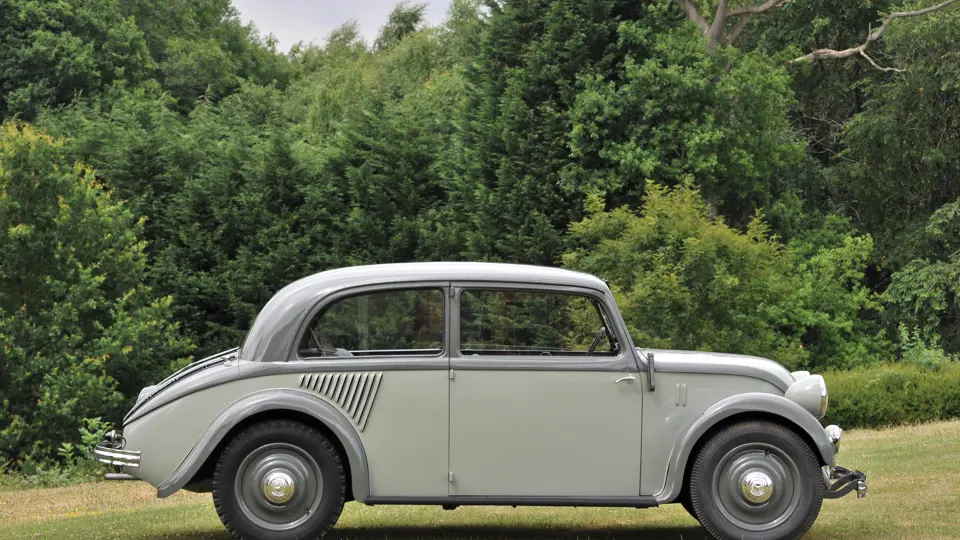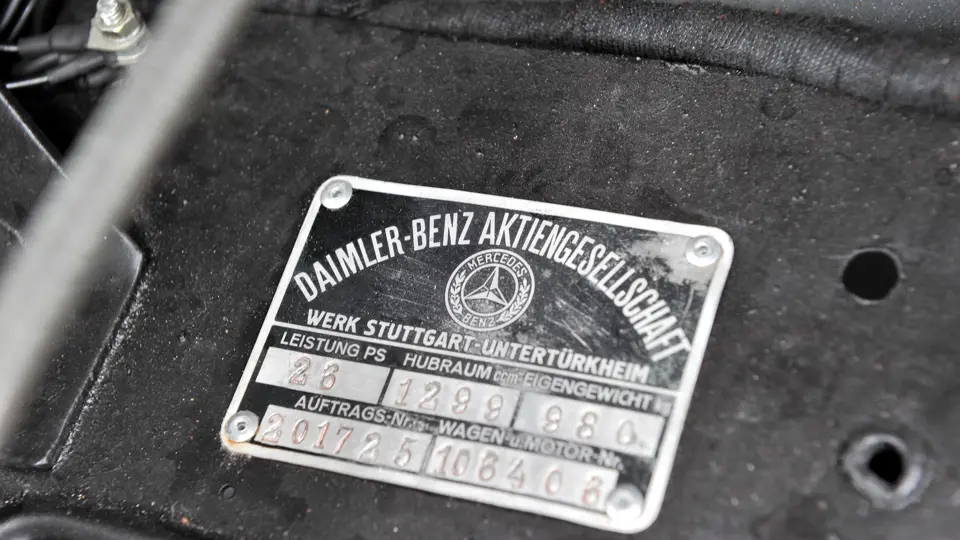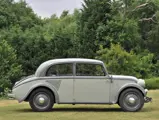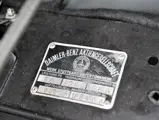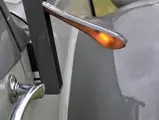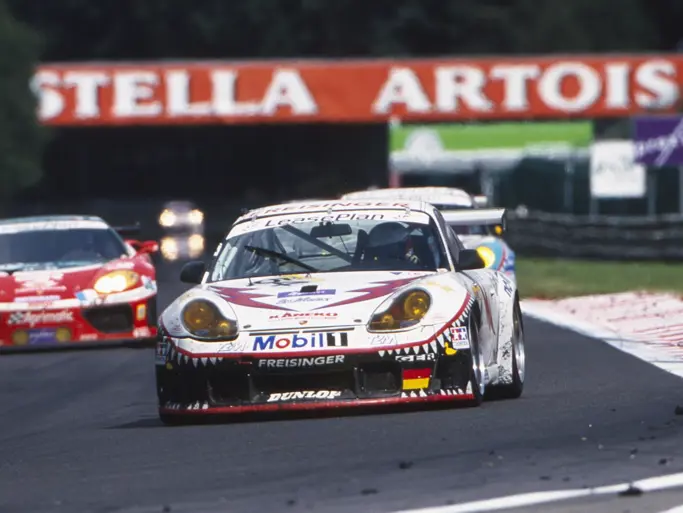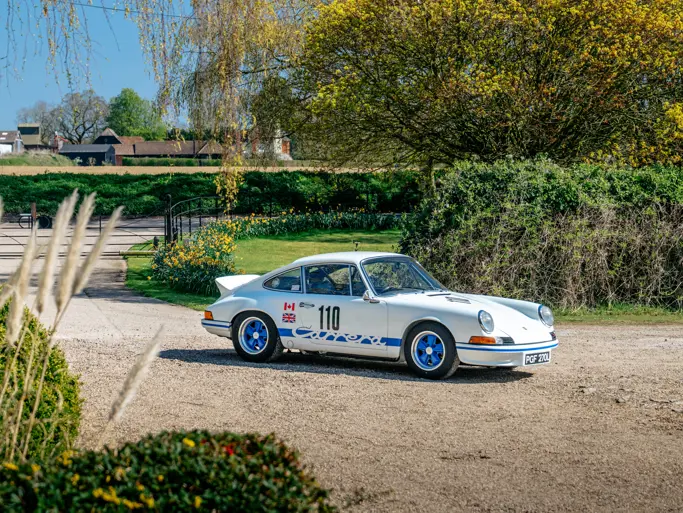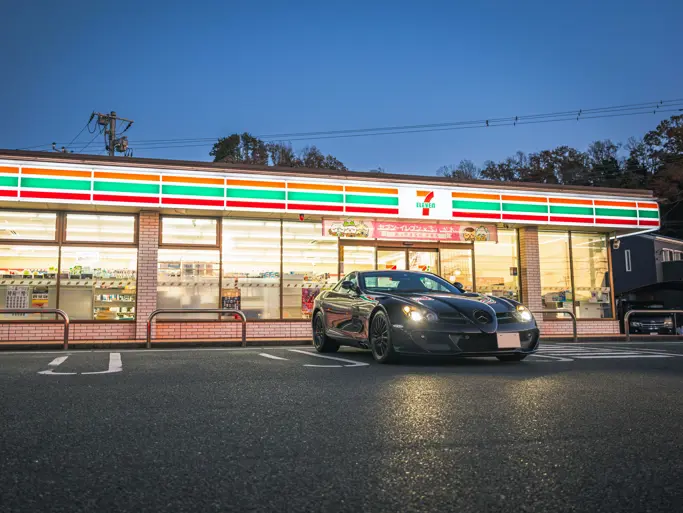26 hp, 1,300 cc side-valve inline four cylinder engine, synchronised four-speed gearbox with semi-automatic overdrive, dual transverse leaf-spring front suspension, independent rear suspension with coil springs, and four-wheel hydraulic drum brakes. Wheelbase: 2,500 mm
Conceived, and ultimately created in 1934, by Mercedes-Benz’s Chief Engineer Hans Nibel, the Type W23 was inspired by the Rumpler-chassis racers, which ran from 1923–1926. The 130 H (with the “H” being German for heck, or rear) utilised a 1.3-litre, side-valve, water-cooled, four-cylinder engine that was located behind the rear axle. The 3+1 synchronised transmission ran ahead of the axle and somewhat counterbalanced the heavy engine. Although the car offered four-wheel independent suspension, handling was poor. However, the overall ride quality was found to be superior to anything in Germany at the time.
The 130 H was sold as a sedan, open-top saloon, or a convertible, each in a two-door configuration. Ultimately, the aerodynamic design had the reputation for awkward handling, which resulted in low volume sales, and the 130 H was discontinued in 1936.
Few of the 4,300 W23 units exist today, making this example a true collectible. This example was delivered new through the distributor in Zurich in March 1935. The first known owner was Dr H. Mende, in Bern, as confirmed by customer service paperwork from Mercedes. The second owner was Dr Josef Feyer, who was located in the town of Reinholz, in the canton of Solothurn; this information is from the accompanying “Auto Buch”.
It has been fully restored and presents in fine condition. The dove grey body and wings, accented by lighter grey side panels, is expertly finished. The exterior is adorned with a centre-mounted driving lamp, headlamps, and a horn, which are all Bosch items, and external trafficators have also been mounted. The re-upholstered interior is finished in grey vinyl with a charcoal headliner. A unique heated defroster system can be found on the driver’s side windshield, and a Bosch heater was added below the restored dashboard for colder climates. The engine compartment and undercarriage are both very tidy, showing minimal use since the restoration was completed. With fine attention paid to each area during the preservation of this rare, rear-engine Mercedes-Benz, it is a quality specimen to be appreciated for its futuristic body design and mechanical composition.




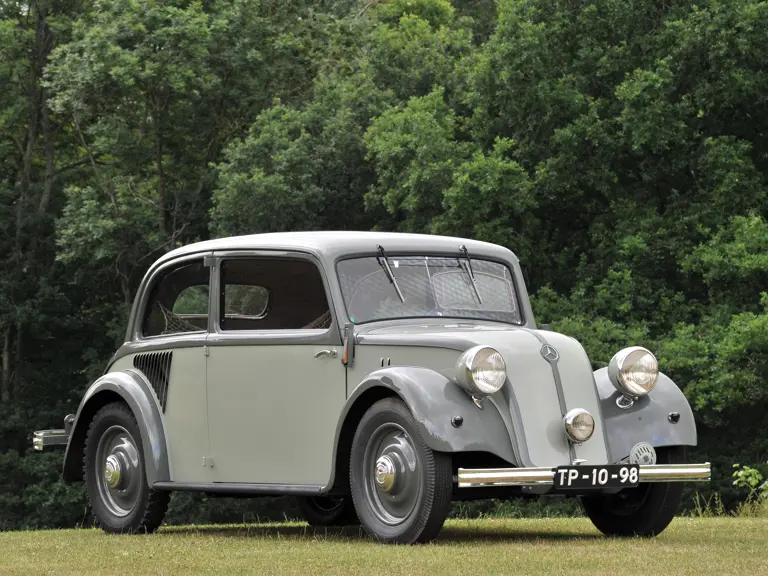



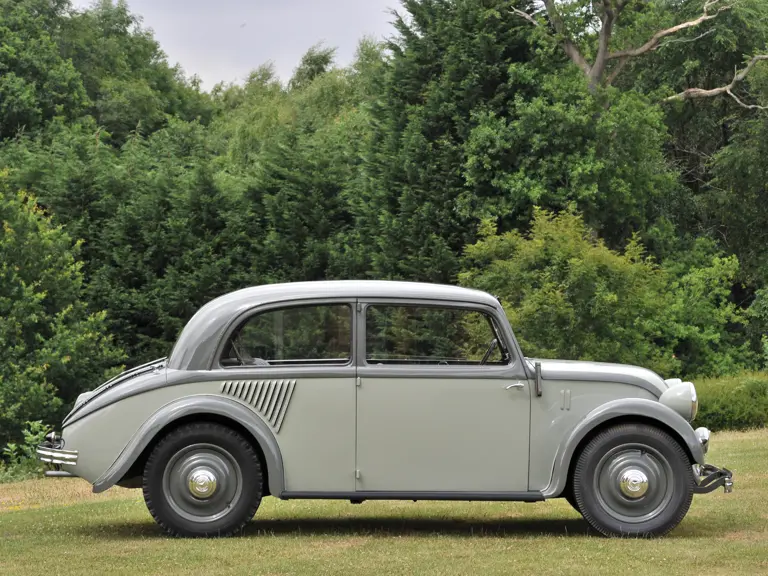
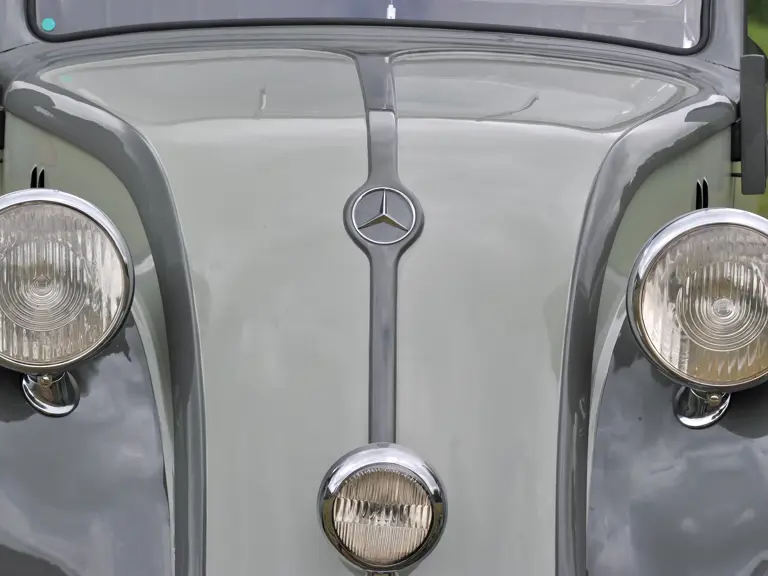
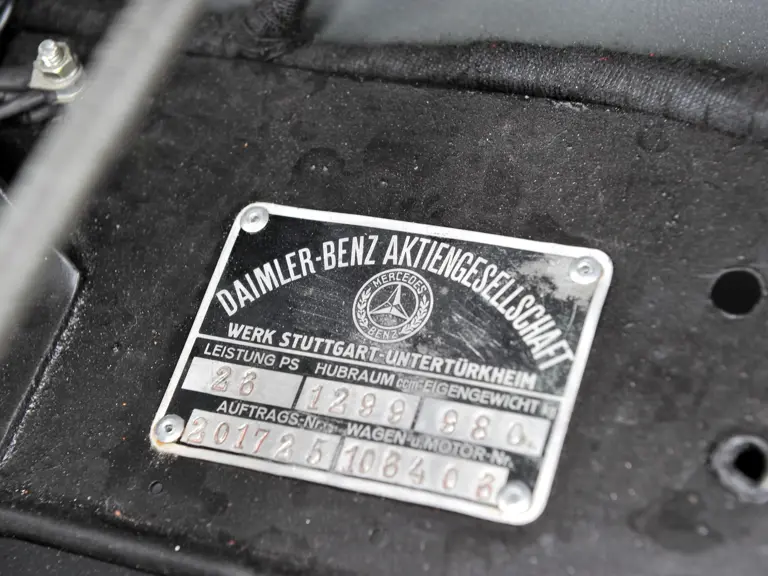

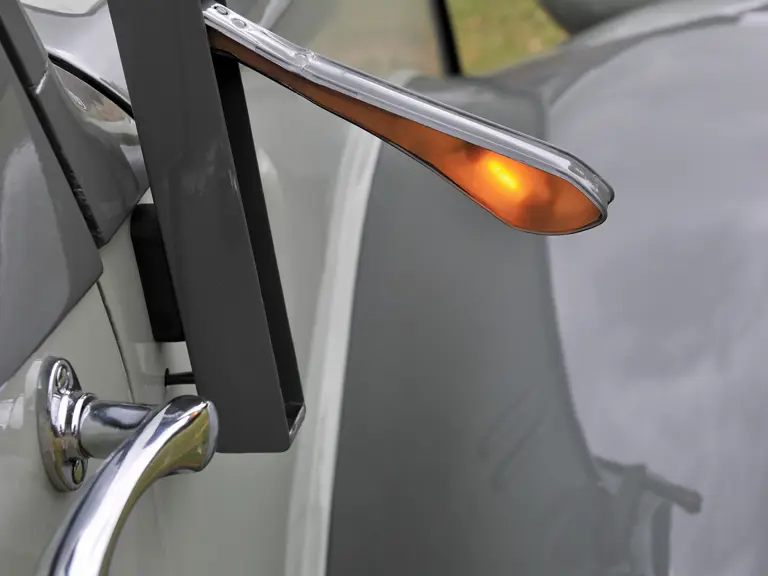

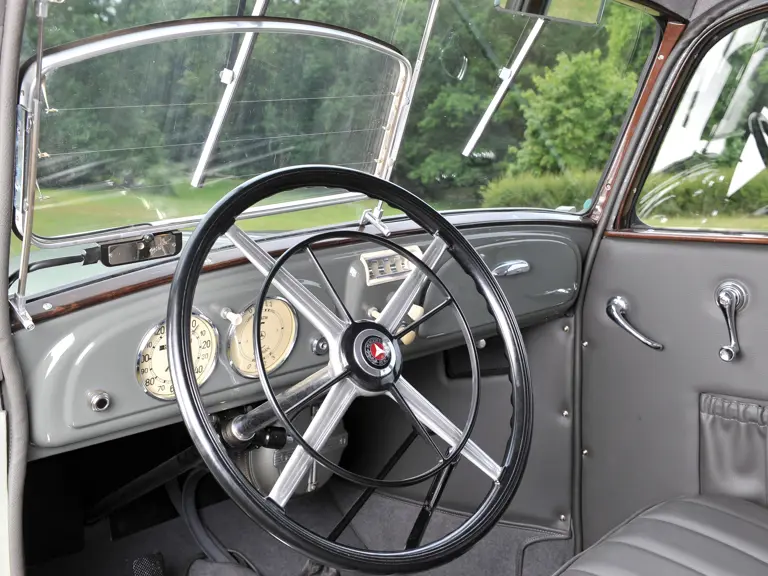
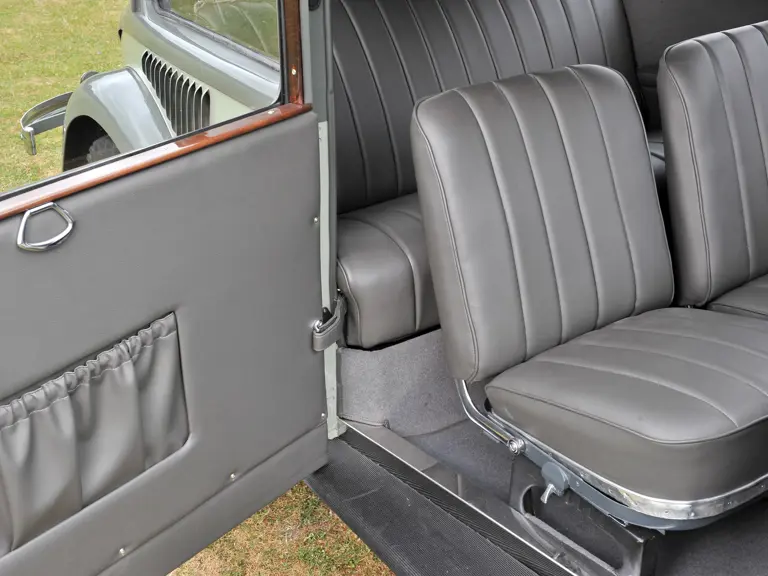




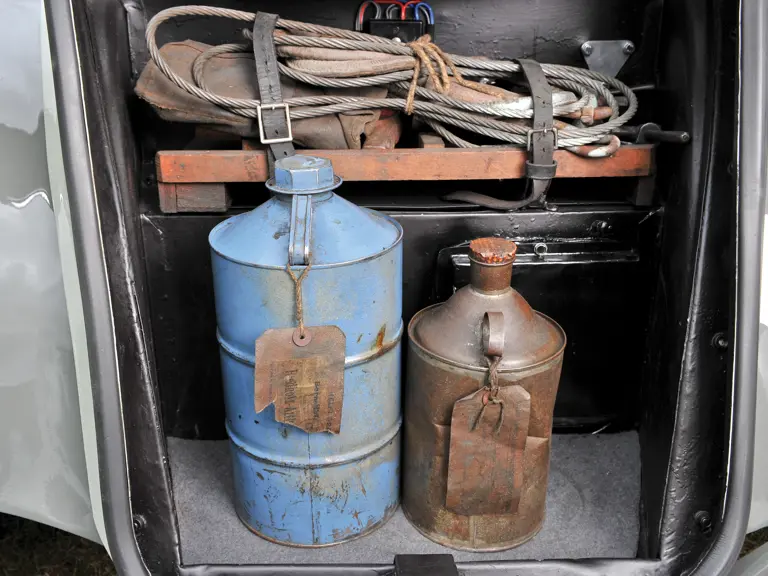
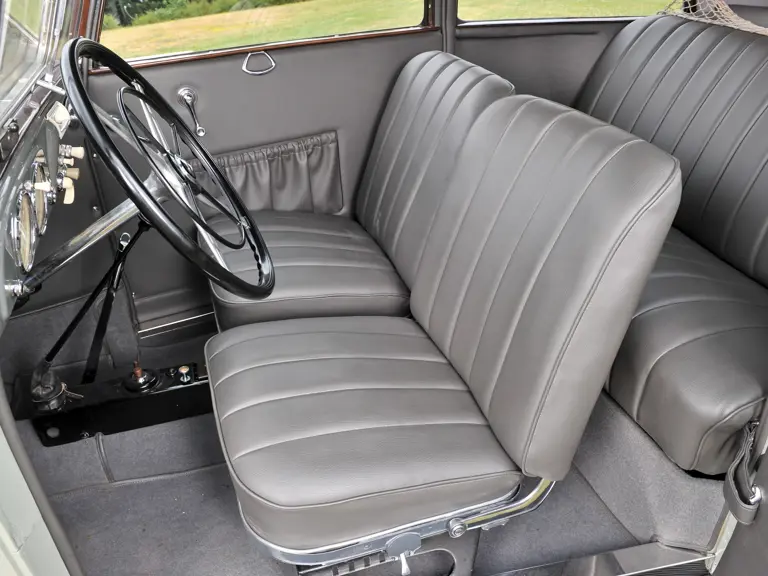
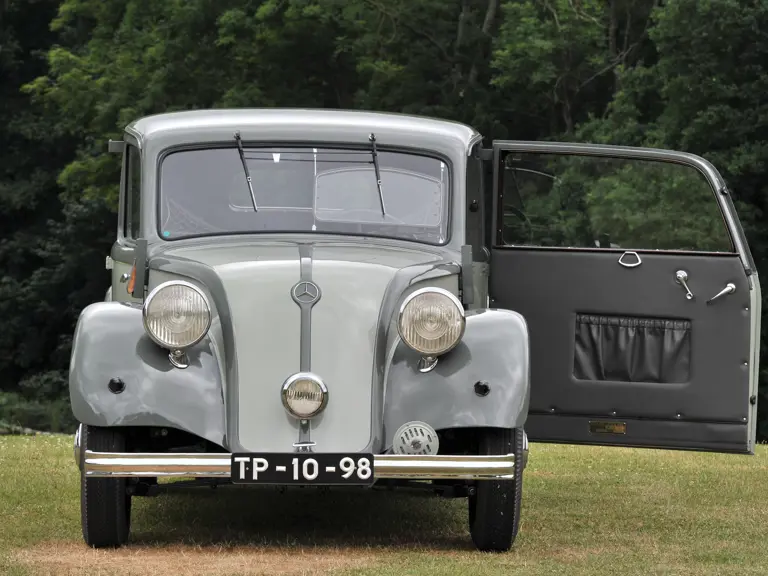
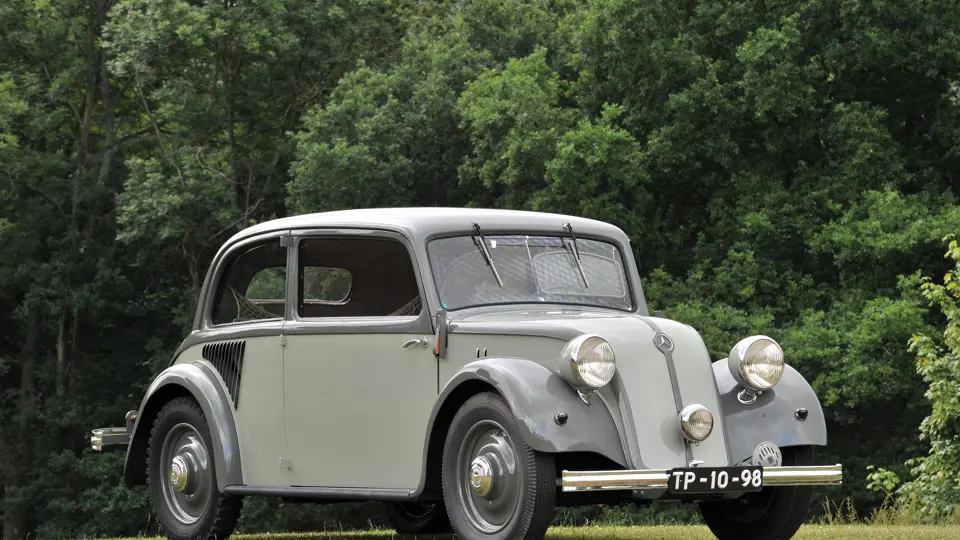
 | London, United Kingdom
| London, United Kingdom
